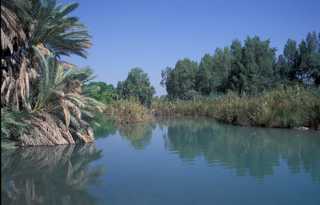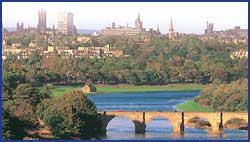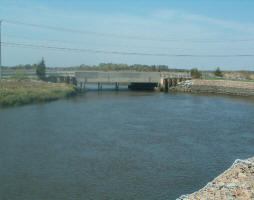 GlobWetland Follow up
GlobWetland Follow up
The GlobWetland project is conceived as a user-oriented project, where the final Information Service should provide a
clear response to specific user needs. Therefore, the project is built up around the information requirements provided
by a User Group made up of the National Authorities responsible for the implementation of the Ramsar Convention in
several countries worldwide. This set of information needs represents the core of the project and the basis for the
development of the GlobWetland Information Service, which should be implemented, validated and assessed for a
representative set of wetland areas (mainly Ramsar Sites) proposed by the members of the User Group in their respective
countries.
The Project implementation team is composed of
Vexcel (Canada), Wetlands International (Netherlands),
Synoptics (Netherlands), and
Remote Sensing Solutions GmbH (Germany). The team will work
collaboratively with the end user community, starting with the User Requirements Documentation (URD) that was provided
to ESA in preparing the project. Phase 1 of the project will focus on the design and prototyping of information
products developed in response to the user needs. Following a critical review of the outcomes of Phase 1, Phase 2
will be implemented whereby operational products will be delivered for 50 wetland sites.
The GlobWetland Project is implemented in response to a need expressed by the end users, wetland management organizations
from around the world. Through its Data User Element Programme, ESA has secured working relationships with over 17 national
focal points to help implement this project.
The contribution of the national focal points in implementing the
project is crucial, since the Project Teams ability to properly
describe derive information products well suited to the needs
expressed, close interaction must occur in order to help understand how
features are represented in earth observation imagery collected
hundreds of kilometers above the earths surface. These organizations
will contribute their time and resources to help provide supporting
ground and contextual data describing the wetlands sites being
analyzed, and collaborate with the project team to arrive at a suitable
set of operational information products for improved management of
wetlands.
| Project number | n/a | ||
|---|---|---|---|
| Subject(s) | HYDRAULICS - HYDROLOGY , INFORMATION - COMPUTER SCIENCES , MEASUREMENTS AND INSTRUMENTATION , METHTODOLOGY - STATISTICS - DECISION AID , NATURAL MEDIUM , PREVENTION AND NUISANCES POLLUTION , RISKS AND CLIMATOLOGY | ||
| Acronym | GlobWetland | ||
| Geographical coverage | Canada, Netherlands, Germany, Algeria, Cameroon, Central African Republic, Chad, Egypt, Kenya, Niger, Nigeria, Senegal, South Africa, France, Austria, Finland, Greece, Italy, Portugal, Spain, Switzerland, Ecuador, Russian Federation | ||
| Budget (in €) | 1000000 | ||
| Programme | ESA | ||
| Web site | http://www.globwetland.org/ | ||
| Objectives | The GlobWetland Project, funded through the European
Space Agency's Data User Element (DUE), aims at
developing demonstration products based on earth observation to improve the ability of wetland managers to better
monitor and assess the condition of wetlands within their respective countries. Earth observation's potential to provide products and services for Ramsar convention priorities was successfully demonstrated through the Treaty Enforcement Services using Earth Observation (TESEO) program in 2001 / 2002. GlobWetland is designed to expand on the successes of TESEO and is focused on end-user requirements from 17 national focal points around the globe. |
||
| Results | Globwetland project is producing satellite-derived and geo-referenced products including inventory maps and digital elevation models of wetlands and the surrounding catchment areas. These products will aid local and national authorities in fulfilling their Ramsar obligations, and should also function as a helpful tool for wetland managers and scientific researchers.
|
||
| Period | 01/01/2009 | ||
 you are not logged in
you are not logged in









